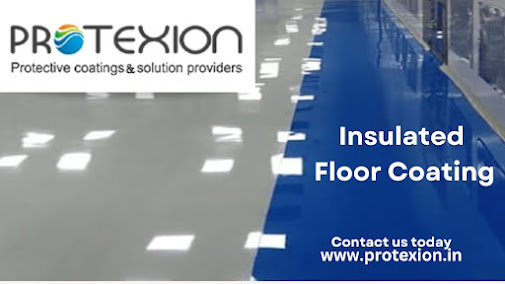When talking about Insulated floor coating paints the most common types of insulation that are thought of when the term "insulation" is used are the pink fiberglass batts that are used in attics and walls and the expanding spray foam products that are used to seal cracks and crevices. But are paints and other coatings of a similar nature insulating? It turns out that they do in some cases. Insulating paints, insulating coatings, insulative paint, and weather barrier coatings (WBCs) are all variants of the same product that combine the decorative qualities of a paint or coating with the energy conservation advantages of a thermal barrier.
Insulated floor coating and paints that insulate are what?
When applied to a surface, insulated floor coating and paints are typically a group of products that can provide thermal insulation. Most of the time, they are made to be applied with a sprayer if the sprayer's filters are the right porosity or are taken out to let the coating and its additives stick to the substrate.
Insulated floor coating and paints that insulate will typically adhere to a surface or substrate that is clean and dry, such as steel, wood, concrete, masonry block, brick, asphalt shingles, plastic, glass, or canvas, to name a few common materials.
How Insulated floor coating and paints Work A lot of thermal insulating paints and coatings work by adding insulating ceramic or glass particles to the substrate of the paint or coating. It is thought that the presence of these particles makes the surface more reflective, preventing heat energy from entering or leaving painted or coated surfaces. Therefore, radiant heat from the sun would reflect rather than be absorbed into the wall and transmitted by conduction to the interior wall surfaces (and ultimately to the air in the building) in buildings whose walls have been treated with an insulating paint or coating. This decrease in transmitted heat may reduce the amount of energy required by air conditioning systems during the summer. Similarly, in colder weather, the internal (heated) air's heat loss through the walls could be reduced, saving money on heating. The application of insulating paints and coatings to surfaces other than a building's envelope follows the same general principle. Similar advantages may accrue to any component of a machine or process that is subject to heat transmission and aims to decrease the rate of heat loss (or gain).
How Insulating Paints and Coatings Are Used Insulated floor coating and paints are used in two main ways. The first is intended for use as a coating to insulate an exterior building. The coating could be applied to the building's exterior walls and roof as well as its interior walls and ceilings in this scenario. These coatings can be used as a primer over which a top coat of standard paint can be applied, or they can be tinted and applied as a finish coat. The application could be for residential or commercial buildings. Many dry to an appearance similar to latex paint; Others appear to be more pebbled. These coatings typically have low VOC levels certified to them, making them safe to use indoors in occupied spaces. In fact, some of these coatings emit fewer VOCs than many common paints currently on the market.
Coatings that contain corrosion inhibitors, in addition to their thermal insulating properties, can improve the stability of steel and other substrates that may be susceptible to corrosion. Insulating paints and coatings are frequently used on metal roofs and structures due to this property.
Insulating paints and coatings can also be used in industrial settings. Insulating machinery and equipment in plants and facilities like these are examples of industrial uses:
Paper mills (storage vessels, tanks, and ductwork), textile plants (dying and drying ovens, washers, and steam generators), paper mills (storage vessels, tanks, and ductwork), asphalt (storage tanks, asphalt vehicles), petrochemical processing (heat exchangers, boilers), food processing facilities (commercial fryers, sterilizers, brewery pipework), sugar mills and refineries (steam lines, tanks), chemical plants (pipelines, pressure valves, and process equipment Zinc phosphate, barium metaborate, and strontium chromate are examples of common corrosion inhibitors. Corrosion Under Insulation (CUI) is a condition in which trapped moisture penetrates the insulating jacket and becomes trapped between the substrate and the insulation. This can both reduce the effectiveness of the insulating material and contribute to potential corrosion in metals. Traditional fiber insulation can also be used in high humidity indoor environments.
Insulating paints and coatings outperform other types of insulation in that they can be applied without touching heated surfaces and without shutting down equipment, saving money on facility downtime costs. Because these products are sprayed onto the substrate with an applicator, they can also be used in tight spaces where it would be difficult to install other types of thermal barriers. Insulating paints and coatings also have the ability to lessen the likelihood of contaminating production processes in circumstances where contamination is a major concern.
Insulating paints and coatings can reduce the accumulation of mold, mildew, bacteria, and other moisture-related conditions that can occur in high-humidity environments, as well as help protect operators from accidental exposure to high temperatures by adding a thermal barrier to reduce heat energy transfer.
For more please visit: http://www.protexion.in/electric-insulation-coating.php

Comments
Post a Comment